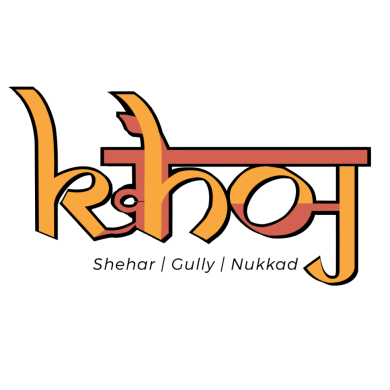Khoj in Jaipur by Anmol Gaba
The majestic home to erstwhile royals, complete with the old-world charm and surrounded by vibrant markets and chaotic streets; Jaipur is one of the effulgent cultural jewels of India. After a six hour drive and a good siesta, we woke up to the pleasing sight of resplendent forts, palaces, havelis and the titillating redolence of ‘Pyaaz Kachoris’ and ‘Dal Bhati’ that wafted through the streets. Gazing at the old city backdrop eclipsed with a beautiful pink hue, our heart almost instantly echoed to the melody of “La Vie en rose”.
The capital city of Rajasthan was ruled by Rajput Kingdoms for many centuries and developed as a planned city in the 17th Century AD. Jaipur was named after the ruler of Amer, Maharaja Sawai Jai Singh II and is home to a few UNESCO World Heritage Sites including Amer Fort, Jantar Mantar, Hawa Mahal and Man Sagar Lake. Amongst these, the quintessential landmark, Hawa Mahal is the ‘proud king’ on the Jaipur sightseeing trail. This five story structure built by Maharaja Sawai Pratap Singh was believed to be inspired by the crown of Lord Krishna. The pink honeycombed façade is replete with Nine hundred and fifty three latticed windows and hence got the name, “The Palace of Winds”. Another landmark that is an elixir of utmost beauty is the Man Sagar Lake which features a floating palace in the middle of a deep blue expanse of water in the man-made lake.
The city is extravagantly rich in its Culture and Arts and the markets of the city are always cherished by the tourists as the cynosure of their eyes.
After sauntering our way past noisy hawkers, rickshawalas and camels in the bustling streets against the backdrop of vibrant terracotta edificies, we finally halted at the Local Bazaars that were flooded with exclusive pieces of handicrafts, kundan jewellery, Bandhani Sarees, Leheriya Dupattas, Blue pottery and Block Printing and Zardozi pieces. The Bapu, Tripola and Johri Bazaar are the main areas for you to splurge at, to your heart’s content.
The stories of the incandescent art of the city, wrapped in six yards of elegance were recited to us by the local artisans themselves. Teeja Devi from their community tells us how the work of Block Printing and manufacturing Bandhani Sarees fosters the family’s intimacy and keeps their heart satiated. These vibrant colored ‘Sarees’ and ‘Odhanis’ are still a part of the daily attire of the locals. The Leheria Sarees also follow the traditional tie and dye technique and got its name from the movement of waves which replicate their production process.
The Blue Pottery of Jaipur is made out of a similar frit material to Egyptian faience, glazed and low-fired. The ‘dough’ for the pottery doesn’t contain clay and is prepared by mixing quartz stone powder, powdered glass, Multani Mitti with water which gives it an eye-catching cobalt blue colour. We visited the Shiv Kripa blue pottery factory outlet and procured an alluring range of plates, vases and pots for you to chose from.
After the customary souvenir shopping, a full-fledged Rajasthani Meal at Chokhi Dhoni along with a fusillade of spectacular performances showcased there is a perfect way to end your day. To know more about the jewels of Jaipur, stay tuned for our next blog post.
